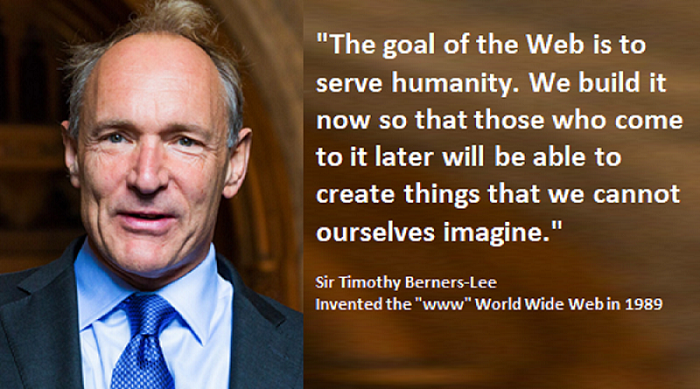In the previous sections, we examined industry 1.0 and 2.0, the important inventors and the technologies they developed. On the road from Industry 1.0 to 4.0, now it’s time to examine the industry 3.0. When did the Third Industrial Revolution in history begin? Let’s take a look together.
Industry 3.0 ( 1950 – 2010 )
Start year ; 1950
Finish year ; 2010
The 1st and 2nd World Wars, the 1929 “The Great Depression” economic crisis slowed the development of technology and industry. The world started its technology development again in 1950 with the 3rd industrial revolution.
If we had a name for the 3rd industrial revolution, we could use the name of “the power of automation”. Computer and digital, industrial robots and PLC (Programmable Logic Controllers) have been the most important developing technologies in the 3rd industrial revolution. Mankind, who continued his life on land and sea in the 1st and 2nd industrial revolution, meets the sky with the 3rd industrial revolution.
Flight industry
When we look at the flight industry in history, the first technology we see is the zeppelin. The zeppelin was discovered by Ferdinand von Zeppelin. On 2 July 1900, Zeppelin made the first flight with the LZ 1 over Lake Constance near Friedrichshafen in southern Germany. The use of the zeppelins ended with the Hinderburg disaster in 1937, which resulted in the death of 36 people. Zeppelins were used in freight and passenger transportation in the period until Industry 3.0.
When the Wright brothers made the world’s first sustained heavier-than-air flight, they laid the foundation for what would become a major transport industry. Their flight, performed in the Wright Flyer during 1903.
By the 1930s, the airliner industry had matured and large consolidated national airlines were established with regular international services that spanned the globe, including Imperial Airways in Britain, Lufthansa in Germany, KLM in the Netherlands, and United Airlines in America. One Boeing 314, the Pacific Clipper, became the first commercial plane to circumnavigate the globe during January 1942
The de Havilland DH.106 Comet was the world’s first commercial jet airliner. Developed and manufactured by de Havilland at its Hatfield Aerodrome in Hertfordshire, United Kingdom, the Comet 1 first flew in 1952.
In 1966, the world’s fastest aircraft SR-71 Blackbird was produced. The Lockheed SR-71 “Blackbird” is a long-range, high-altitude, Mach 3+ strategic reconnaissance aircraft developed and manufactured by the American aerospace company Lockheed Corporation. The reason why the SR-71 Blackbird is called the fastest aircraft in the world is that it can reach 3 thousand 540 kilometers per hour at three times the speed of sound.

The Airbus A380 is a wide-budy aircraft manufactured by Airbus. It is the world’s largest passenger airliner. It was first delivered to Singapore Airlines on 15 October 2007 and entered service on 25 October.
Space
In the 3rd industrial revolution, the sky travel of humans was not limited to airplanes, human beings discovered space.
The V-2 rocket became the first artificial object to travel into space by crossing the Kármán line with the vertical launch of MW 18014 on 20 June 1944. It was invented by the Germans and unfortunately used as a weapon in World War II.
It is the world’s first artificial satellite. On October 4, 1957, the USSR successfully launched Sputnik 1 and placed it in orbit.
Laika was the first living organism Soviet dog to fly into space. Laika was selected as the passenger of the Sputnik 2 spacecraft launched in 1957. Unfortunately, shortly after reaching space, Laika died. In 1960, the dogs Belka and Strelka were sent into orbit aboard Sputnik 5 and safely returned. Thus, the dogs Belka and Strelka became the first living organism to go into space and return.
Yuri Gagarin became the first person to successfully reach Earth orbit on April 12, 1961, on a Vostok 1 vehicle. Vostok 1 took Gagarin down to Soviet territory after a complete 108-minute orbit of the earth orbit.

The first person to step onto the Moon on July 20, 1969 was American Neil Armstrong. Armstrong, who was the commander of the Apollo 11 mission. This is considered one of the highlights of the 20th century and the industry 3.0 era

Computer
We can start our computer journey with Charles Babbage. Charles Babbage was a A mathematician, philosopher, inventor and mechanical engineer. Babbage originated the concept of a digital programmable computer in 1837. Babbage is considered by some to be “father of the computer“
Herman Hollerith developed an electromechanical tabulating machine for punched cards to assist in summarizing information, census of countries and later in accounting in 1890. Hollerith founded a company that was amalgamated in 1911 with several other companies to form the Computing-Tabulating-Recording Company. In 1924, the company was renamed “International Business Machines” (IBM) and became one of the largest and most successful companies of the 20th century.
The principle of the modern computer was proposed by Alan Turing in his seminal 1936 paper,[On Computable Numbers. Turing proposed a simple device that he called “Universal Computing machine” and that is now known as a universal Turing machine. In 1945, Turing began work on developing an electronic stored-program digital computer. His 1945 report “Proposed Electronic Calculator” was the first specification for such a device.
Konrad Zuse invented the world’s first programmable computer; the functional program-controlled Turing-complete Z3 became operational in 1941. Zuse has often been regarded as the inventor of the modern computer. In 1941, he founded one of the earliest computer businesses, producing the Z4, which became the world’s first commercial computer.
ENIAC (Electronic Numerical Integrator and Computer) was the first programmable, electronic, general-purpose digital computer.Built by American scientists in 1947 during World War II, ENIAC was the first computer to come out. ENIAC fit an area of approximately 167 m² and weighed thirty tons. It consumed about 180 kW of electricity per hour. The biggest feature; Electron tubes and RAM memory, which can be considered as the ancestor of today’s chips, have been used.
The Altair 8800 was the first computer to be sold with a screen and a keyboard. It is the first personal computer, It was produced by the MITS company in 1975.
“IBM PC” was released by IBM in 1981. “IBM PC” had a substantial influence on the personal computer market. The specifications of the IBM PC became one of the most popular computer design standards in the world, and the only significant competition it faced from a non-compatible platform throughout the 1980s was from the Apple Macintosh product line.
Apple was founded in 1976 by Steve Jobs, Steve Wozniak, and Ronald Wayne. “The Macintosh” was manufactured by Apple, started in 1984 and was one of the first successful computer series on the market to use a mouse and graphical interface.
Microsoft was founded by Bill Gates and Paul Allen in 1975, to develop and sell Basic interpretes for the Altair 8800 (MITS). It rose to dominate the personal computer operating system market with Ms-Dos in the mid-1980s, followed by Microsoft Windows.

Steve Jobs and Bill Gates
First “www – World Wide Web” in the world
The first workable prototype of the Internet came in the late 1960s with the creation of ARPANET, or the Advanced Research Projects Agency Network. Originally funded by the US Department of Defense, ARPANET allowed multiple computers to communicate on a single network.
English scientist Sir Timothy Berners-Lee invented the World Wide Web in 1989. He wrote the first web browser in 1990 while employed at CERN near Geneva, Switzerland.The browser was released outside CERN to other research institutions starting in January 1991, and then to the general public in August 1991. The Web began to enter everyday use in 1993-4, when websites for general use started to become available.The World Wide Web has been central to the development of the Information Age, and is the primary tool billions of people use to interact on the Internet.
In 2004, Berners-Lee was knighted by Queen Elizabeth II for his pioneering work. Sir Timothy Berners-Lee was named in Time magazine’s list of the 100 Most Important People of the 20th century. He received the 2016 Turing Award “for inventing the World Wide Web, the first web browser, and the fundamental protocols and algorithms allowing the Web to scale”.

First PLC “programmable logic controller “
PLC is a ruggedized computer used for industrial automation. It can automate a specific process, machine function, or even an entire production line.
In 1968, General Motors issued a request for proposals for an electronic replacement for hard-wired relay systems based on a white paper written by engineer Edward R. Clark. The winning proposal came from Bedford Associates from Bedford, Massachusetts. The result was the first PLC—built in 1969–designated the 084, because it was Bedford Associates’ eighty-fourth project. One of the people who worked on that project was Dick Morley, who is considered to be the “father” of the PLC.
With the invention of PLC, machine electrical panels became smaller, machine commissioning times were shortened, working system changes became easy and breakdown were reduced.
Final Words
I think that in the future, historians will be able to divide human history into before and after the Internet.
In 1982, futurist and inventor R. Buckminster Fuller estimated that up until 1900, human knowledge doubled approximately every century, but by 1945 it was doubling every 25 years. And by 1982, it was doubling every 12-13 months. Today IBM’s prediction that by 2020, knowledge will likely be doubling every 11 to 12 hours.

Human knowledge over the years
While examining the Industry 3.0 era, I did not examine robot technologies. We will talk about robot technologies in my next article.
References
www.wikipedia.org
www.history.com
www.britannica.com

